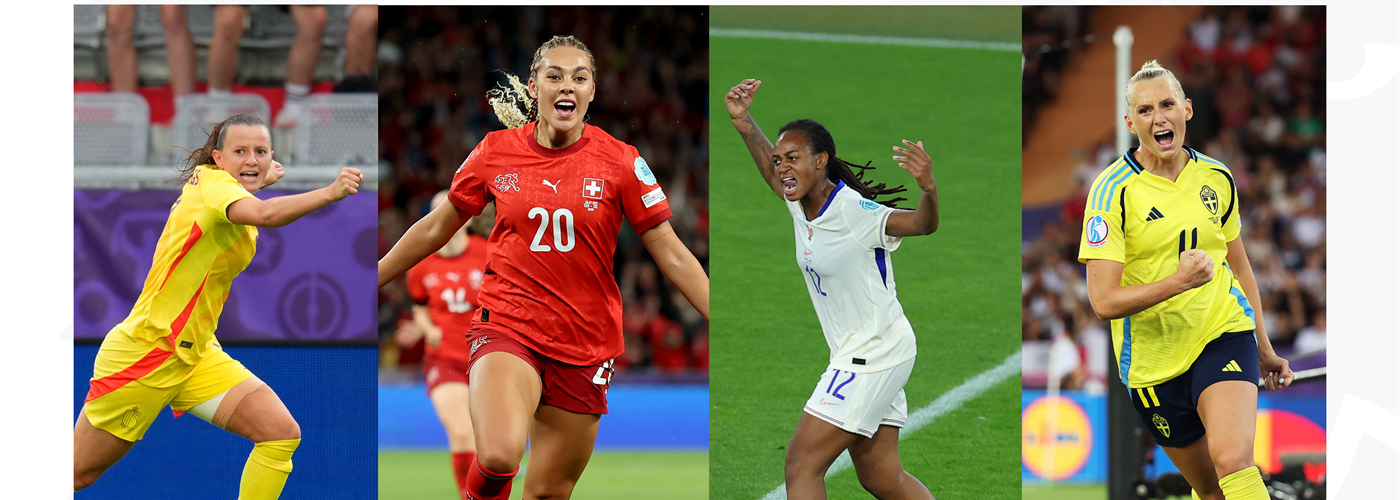Individual Tactics of Centre Forwards at Euro 2025
In a spectacular summer in Switzerland, decisive moments often came down to a player’s ability to perform in individual battles, particularly when scoring goals. Game Insights Analyst Jess Saunders explores the individual role of centre forwards in executing moving with the ball and how effective this can be when translated into important goalscoring opportunities.
What are Individual Tactics?
Individual tactics are the strategies and actions players use to gain an advantage over their direct opponent. When thinking about in possession moves, this could be through movement, ball control or body positioning, to name a few. Read our How to help players develop individual tactics' article to support your understanding as we explore some key themes from the 2025 Euros.
How Assists Shaped Goalscoring
Across the 2025 Euros, 74% of open play goals were assisted, with centre forwards scoring 30 of those. We often view centre forwards as ‘target’ players in the box, but what happens when they are exposed to opportunities that come deeper in the pitch, and require the use of ball carrying to be executed?
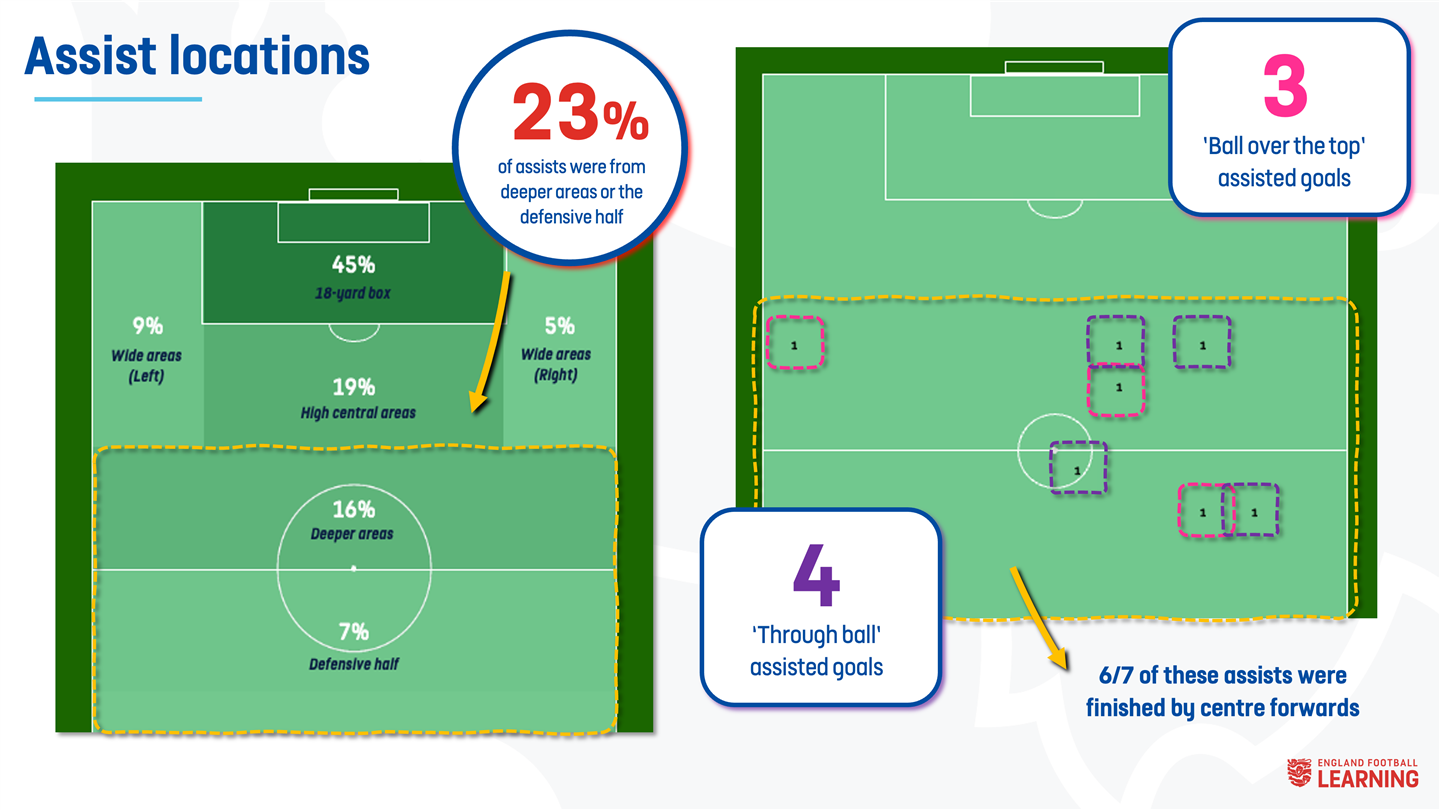
This graphic shows two pitches. The pitch on the left shows the percentage of open play goal assist locations from Euro 2025. The pitch on the right shows the type of pass used for each assist, from deeper areas or the defensive half.
As expected, the majority of assists came from high central and box areas. However, several decisive goals were created from those deeper assist zones, often requiring a centre forward to receive, carry, and finish – like the examples below.
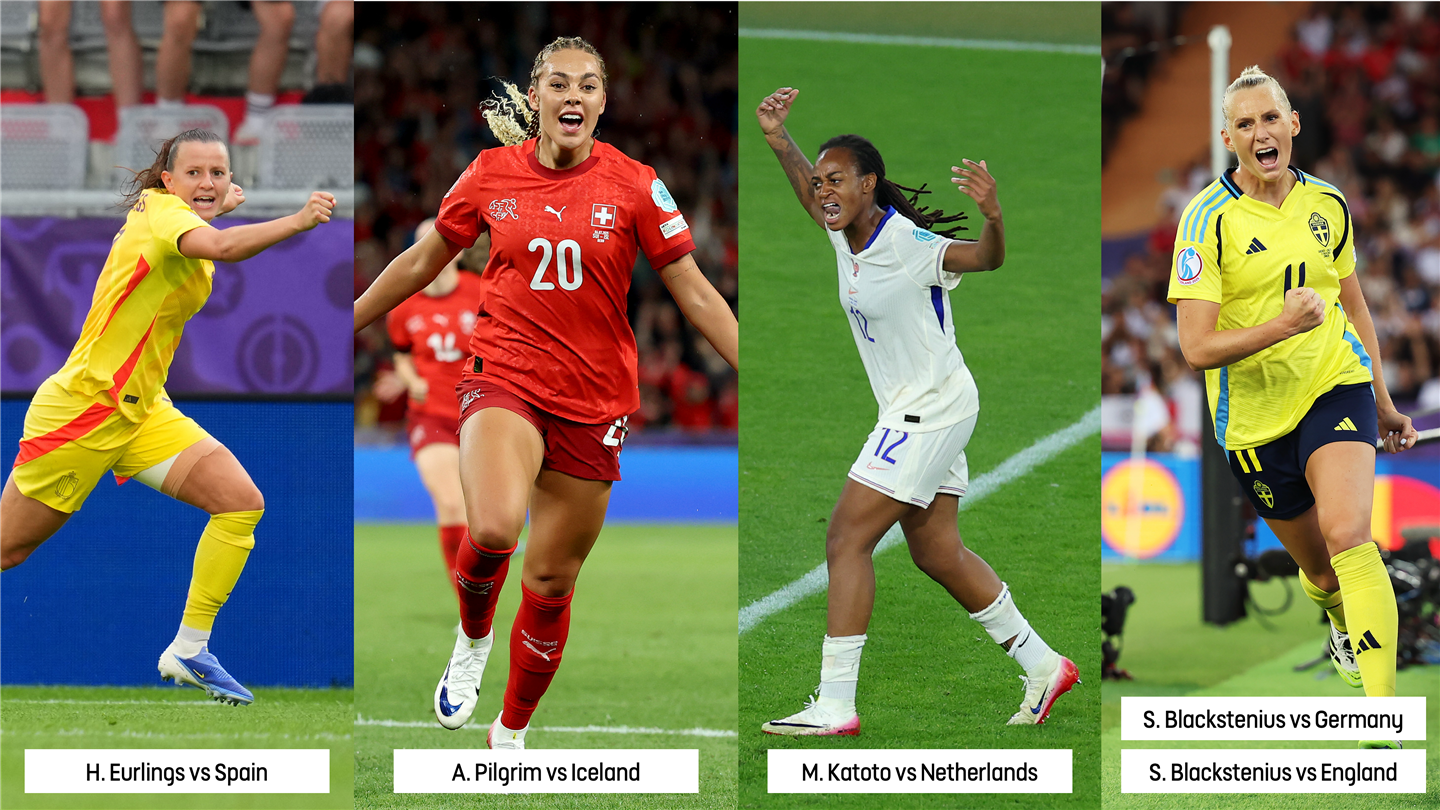
Photo credits: 1. Aitor Alcalde - UEFA/UEFA via Getty Images, 2. Alexander Hassenstein/Getty Images 3. Fran Santiago - UEFA/UEFA via Getty Images 4. Charlotte Wilson/Getty Images
Each centre forward had to use their individual tactics of receiving the ball, carrying under pressure, and decision-making to turn a deeper possession into a skilful goal. Just as importantly, they also needed to recognise the context around them to adapt the way they carried the ball to create the best possible goal-scoring chance.
Take Katoto’s goal against the Netherlands and Eurlings’ goal against Spain as examples below. Katoto used a short carry to burst past the nearest Netherlands defender, following excellent close control in a tight space, giving her that vital half a yard of space to execute a composed low finish past the Netherlands goalkeeper.
In contrast, Eurlings executed a longer carry, meaning the individual skills she used when moving with the ball were different. Her ability to keep close control whilst at heightened speed allowed her to pick moments of when to touch the ball forward, creating an angle to drive inside and stay in front of the defender before getting her shot off.
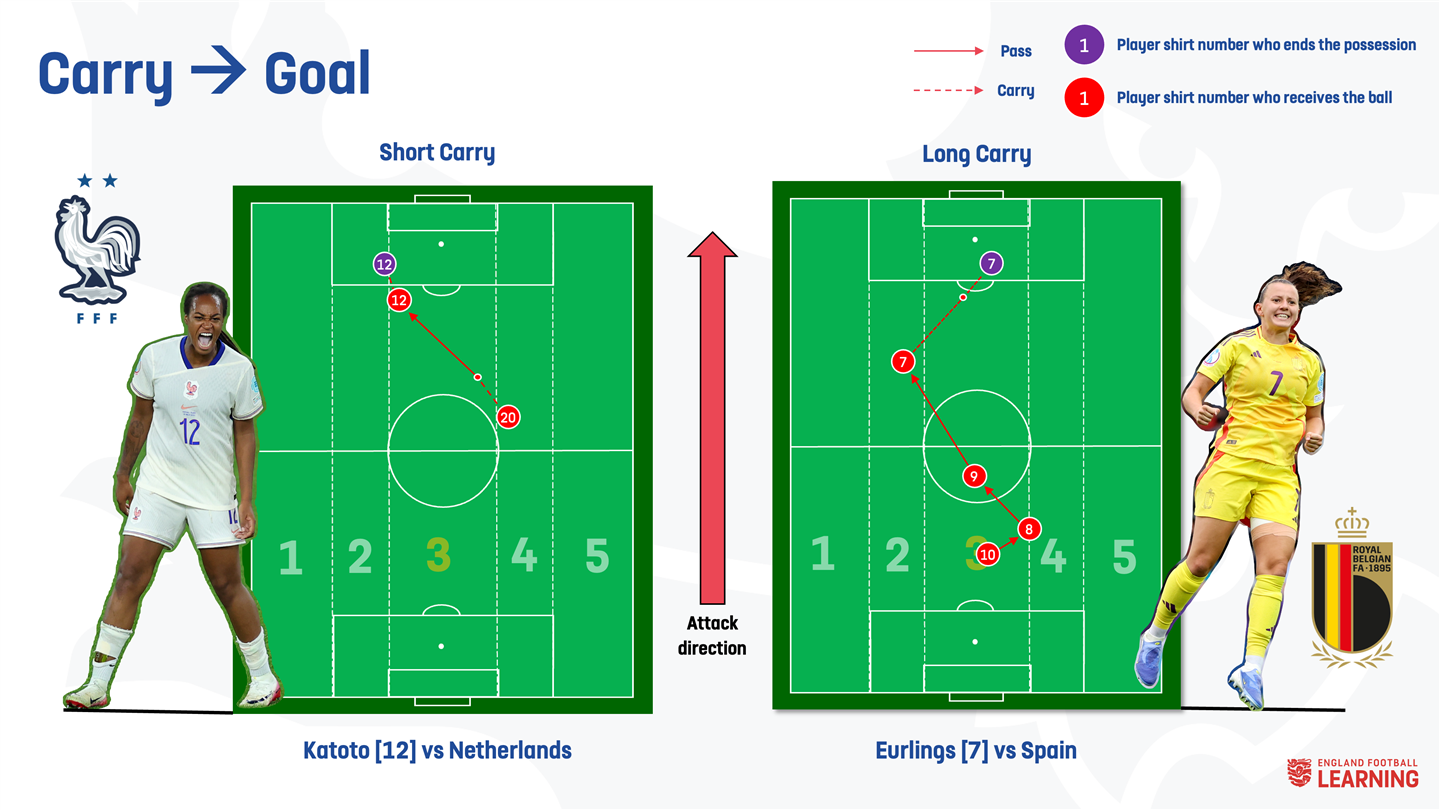
This graphic shows goal sequences of Katoto and Eurlings from Euro 2025. The sequences are on individual pitch maps with defined lanes (1 to 5). Photo credit: 1. Aitor Alcalde - UEFA/UEFA via Getty Images 2. Florencia Tan Jun - UEFA/UEFA via Getty Images
Despite the individual tactics of the goals differing, both players successfully used their carrying ability to move the ball into lane 3 of the pitch when looking to finish the chance. This lane was where 82% of all goals were scored from across the tournament, making it an important area to move the ball into when creating chances.
One player who repeatedly mastered this combination of individual tactics and decision-making when moving with the ball was Stina Blackstenius.
Player Case Study: Stina Blackstenius’ Ball Carrying Impact
Stina Blackstenius provided one of the clearest examples of how effective individual tactics can be used to directly influence goal-scoring outcomes at Euro 2025, with 2 out of 3 goals involving a carry before a finish. Check out her dominant statistics below.
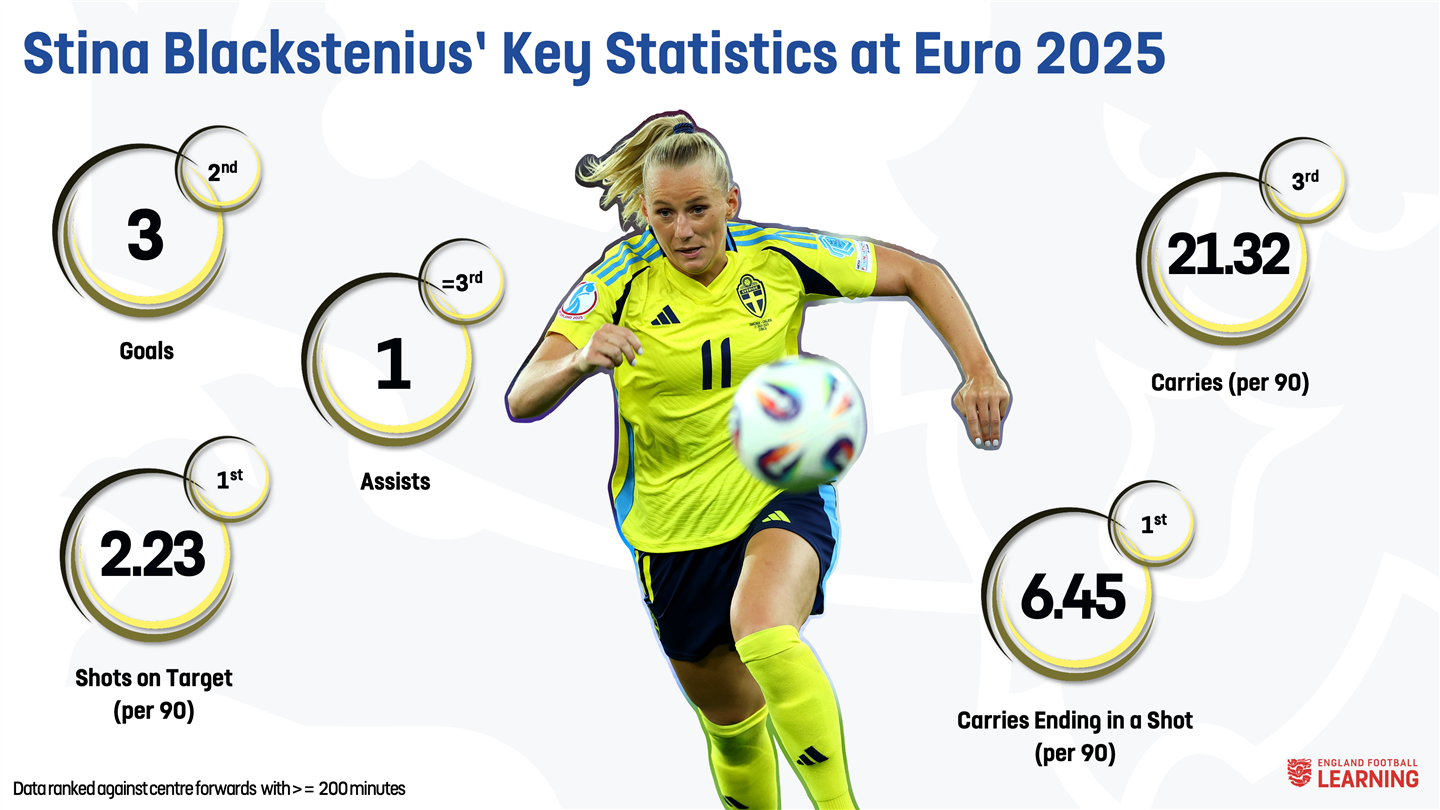
This graphic shows Stina Blackstenius’ key statistics at Euro 2025. These were goals, assists, shots on target (per 90), carries (per 90) and carries ending in a shot (per 90), along with Blackstenius’ rank against other centre forwards at Euro 2025. Photo credit: Molly Darlington - UEFA/UEFA via Getty Images
The data highlights her ability not only to carry frequently but also to turn those carries into high-quality attacking actions. The scatterplot below reinforces her standout position, compared to other centre forwards at the tournament: Blackstenius sits well above the trend line, combining her strong carrying ability with a remarkable efficiency to convert them into shots.
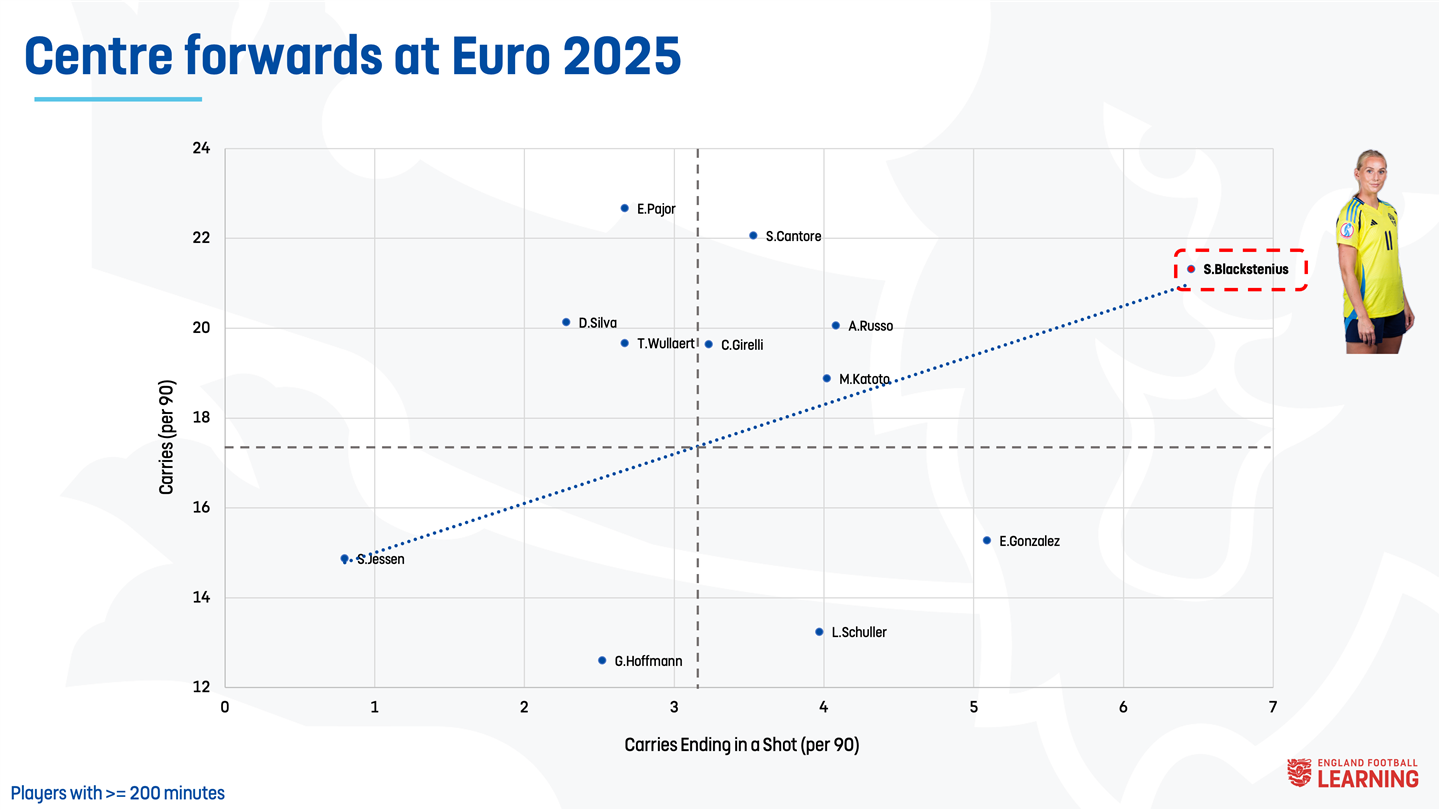
This graph shows the relationship between carries (per 90) and carries ending in a shot (per 90) for each centre forward at Euro 2025. Stina Blackstenius is highlighted in red to show her position above the trend line.
How Did Blackstenius Use the 6 Key Capabilities when Moving with the Ball?
Now that we have seen the effectiveness of Blackstenius at moving with the ball in these moments, let’s dive deeper into the two goals she scored from her carrying ability and how she used the six key capabilities of scanning, timing, movement, positioning, deception, and technique to execute these successful goal attempts. Read our 'What are The FA's six core capabilities?' article to explore each capability in more detail.
In the example below, Blackstenius uses the 6 key capabilities to carry the ball forward from a deeper position and finish on the edge of the 6-yard box.
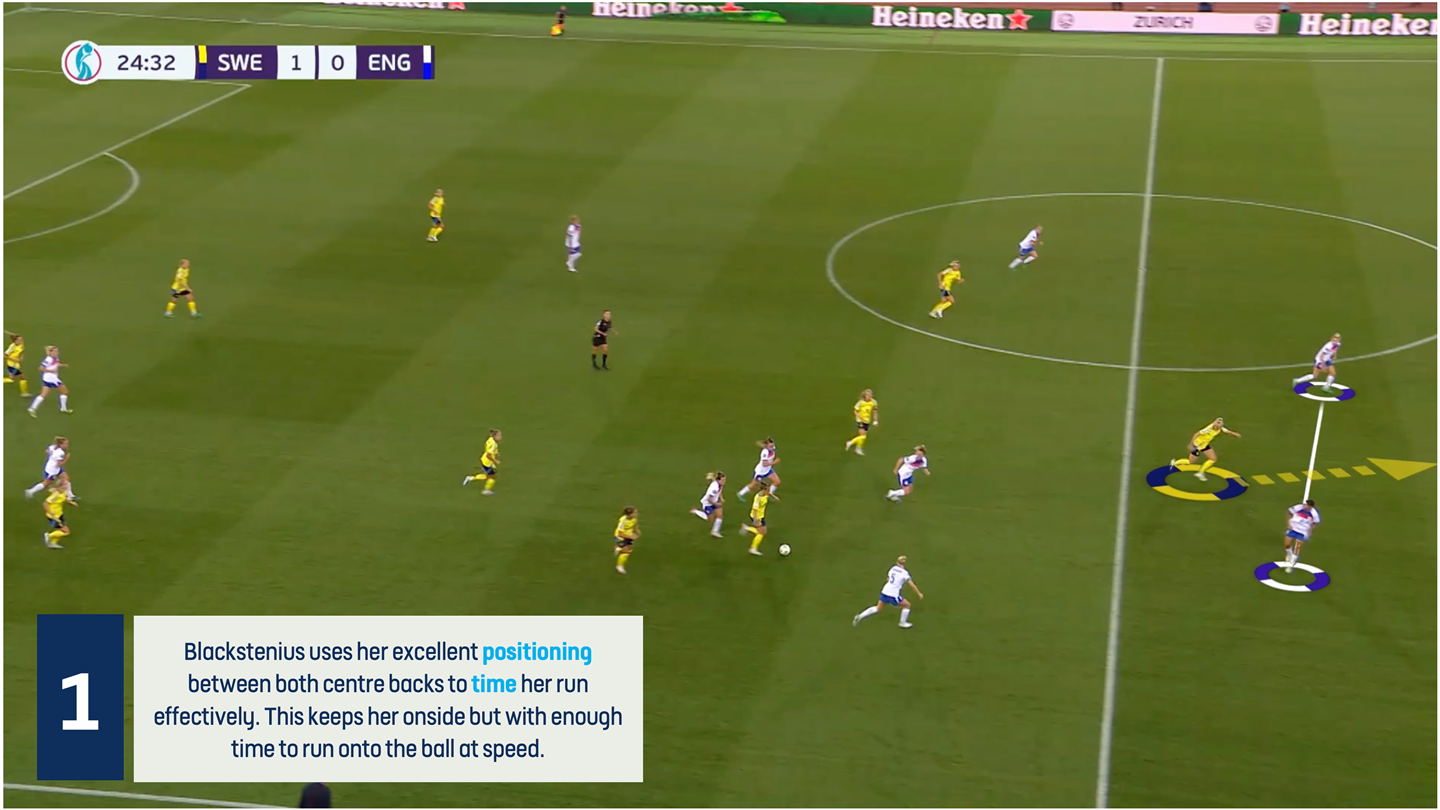
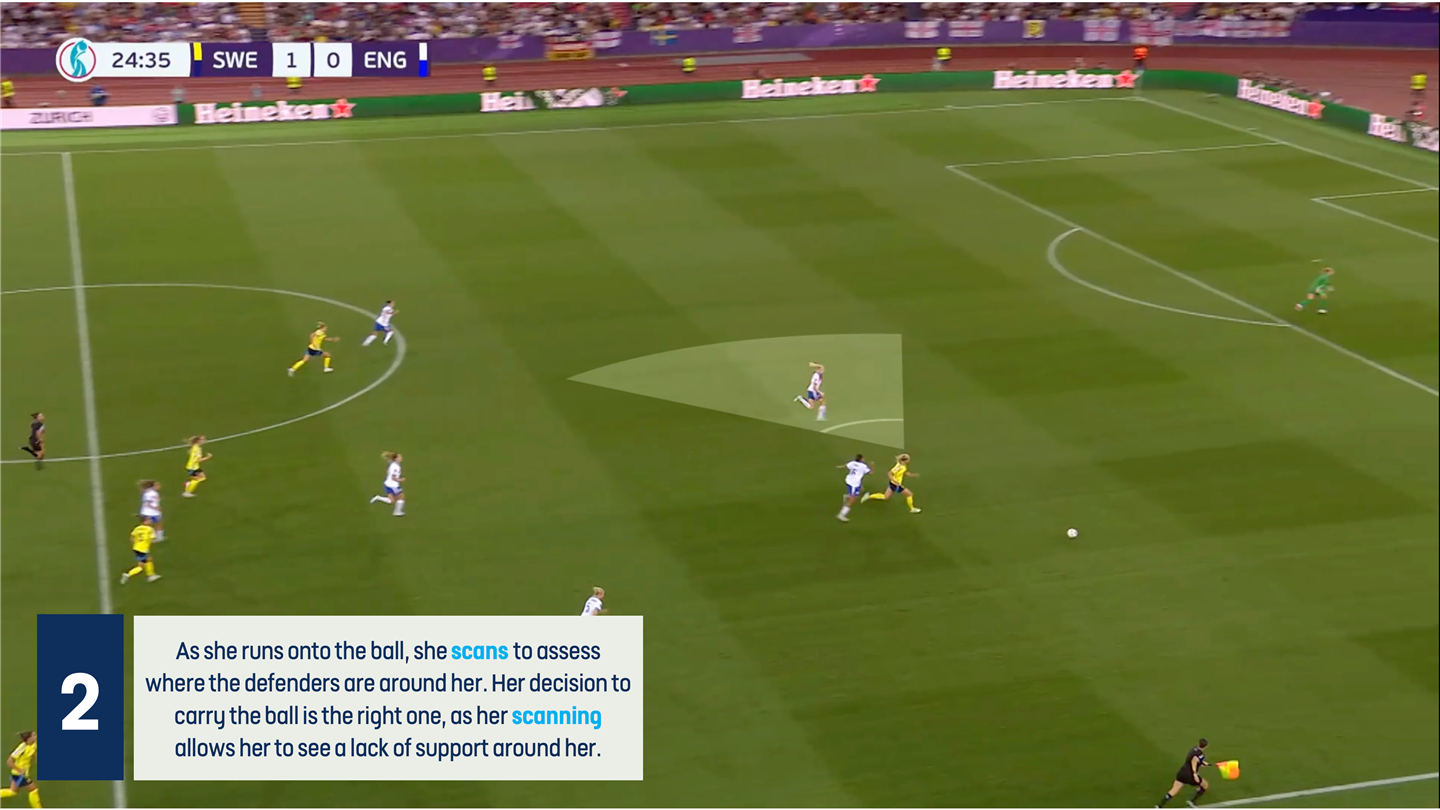
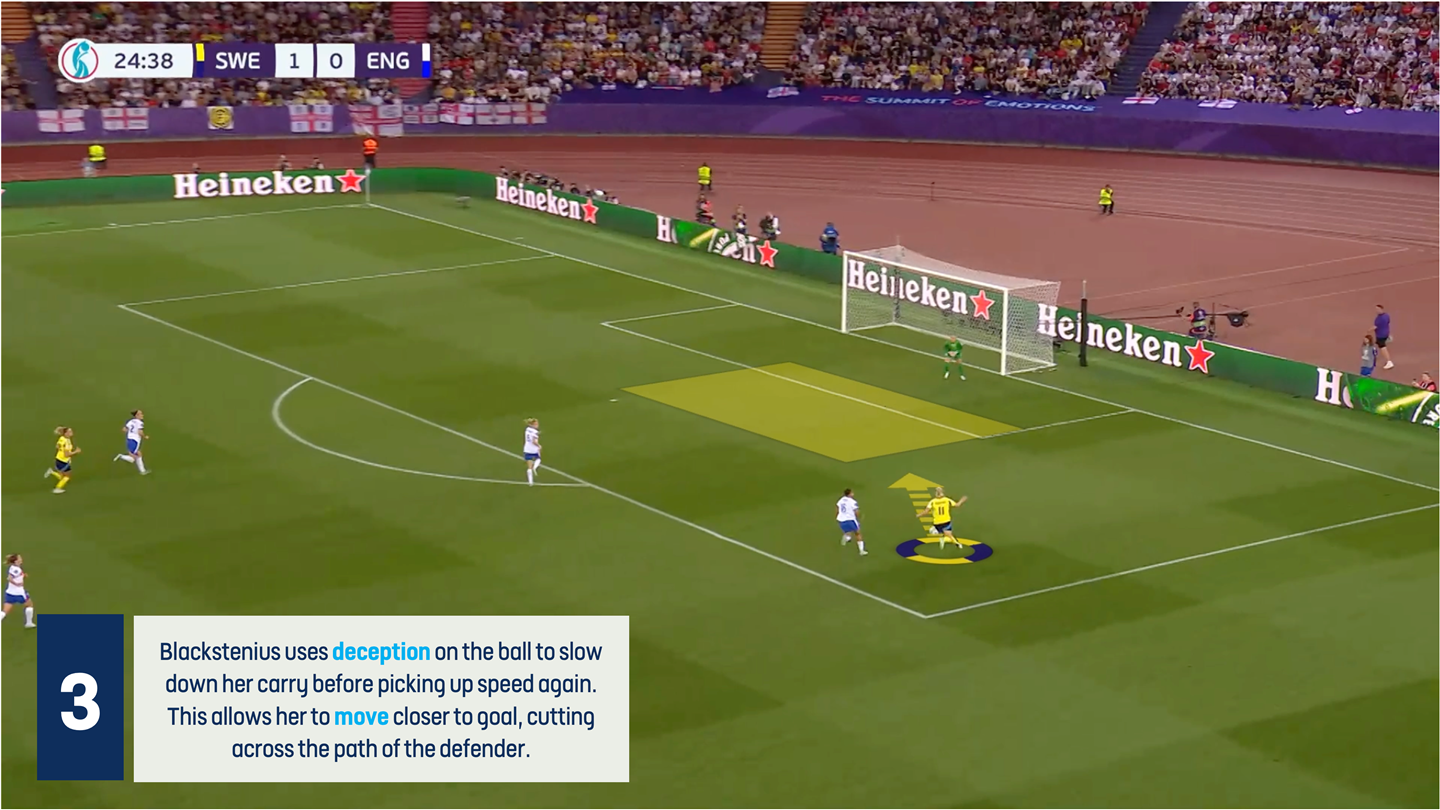
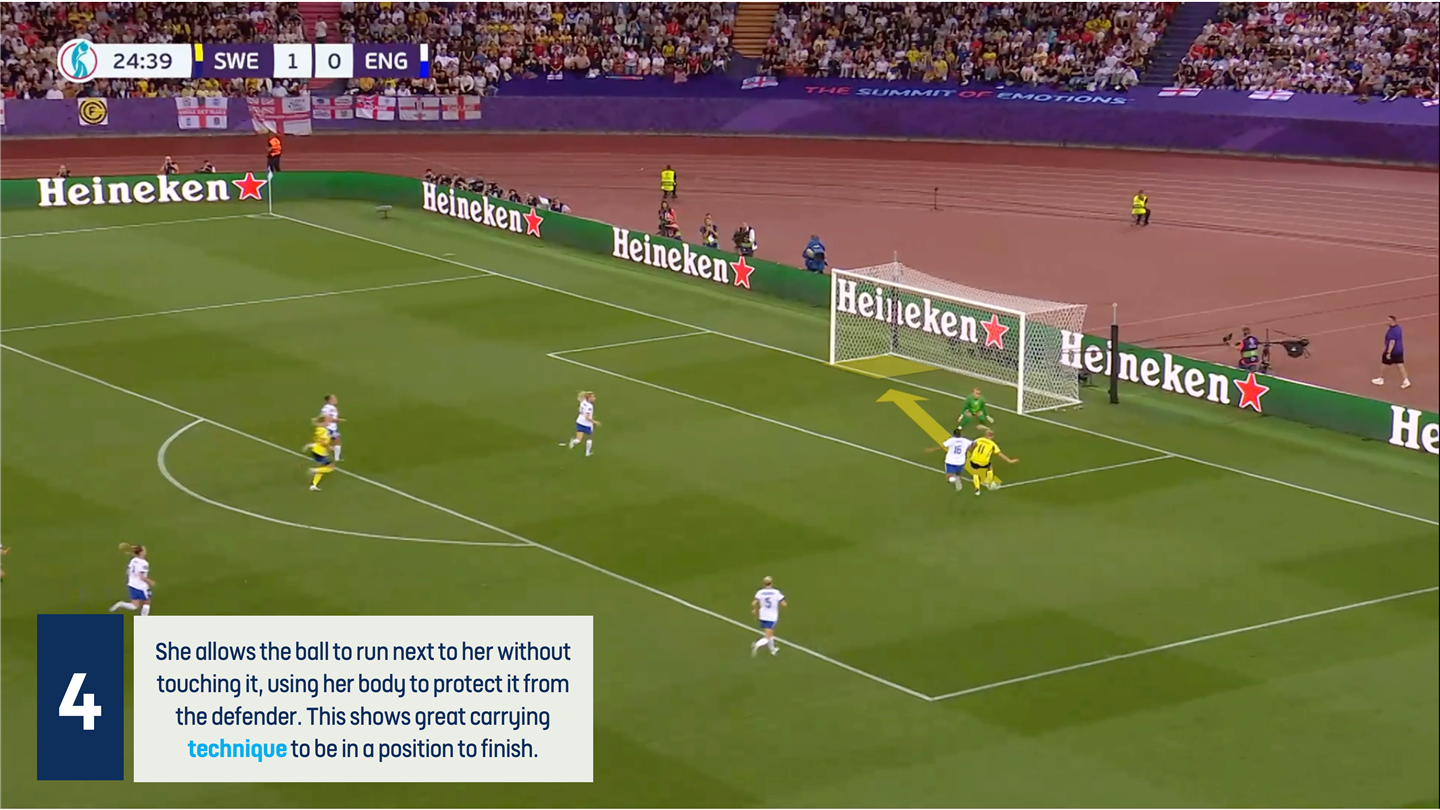
All 6 capabilities can also be shown in her goal against Germany. She picked the ball up deeper and produced a longer carry to break past the defensive line and finish just inside the 18-yard box. Both goals are prime examples of how centre forwards can use their own ball-carrying strengths to execute individual tactics on the biggest European stage.
Coaching Considerations
- How could you support your players to use their own individual tactics when moving with the ball to finish in front of goal?
- How can you design your sessions to replicate the pitch location and distance that centre forwards need to carry the ball?
- When moving with the ball, what are the key capabilities that stand out in your centre forwards? How can you support their decision-making before, during and after carrying the ball?


